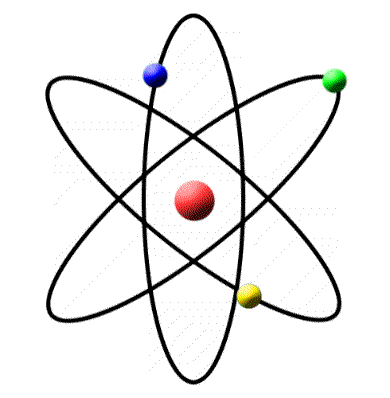The ratio of the wavelength of spectral lines \( H_\alpha \) and \( H_\beta \) in the Balmer series is \( \frac{x}{20} \). The value of \( x \) is _______.
The ratio of the wavelength of spectral lines \( H_\alpha \) and \( H_\beta \) in the Balmer series is \( \frac{x}{20} \). The value of \( x \) is _______.
Solution and Explanation
The Balmer series involves transitions where an electron in a hydrogen atom drops to the n=2 energy level. The wavelengths of the emitted photons are described by the Rydberg formula:
1/λ = R (1/2² - 1/n²)
Where:
- λ is the wavelength of the emitted photon
- R is the Rydberg constant (approximately 1.097 x 107 m-1)
- n is the principal quantum number of the initial energy level (n > 2)
Hα and Hβ Transitions
- Hα: This corresponds to the transition from n=3 to n=2.
- Hβ: This corresponds to the transition from n=4 to n=2.
Calculating the Wavelengths
- Wavelength of Hα (λα):
1/λα = R (1/2² - 1/3²) = R (1/4 - 1/9) = R (5/36)
λα = 36 / (5R) - Wavelength of Hβ (λβ):
1/λβ = R (1/2² - 1/4²) = R (1/4 - 1/16) = R (3/16)
λβ = 16 / (3R)
Finding the Ratio λα/λβ
(λα / λβ) = (36 / 5R) / (16 / 3R) = (36 / 5R) * (3R / 16) = (36 * 3) / (5 * 16) = 108 / 80 = 27/20
Determining the Value of x
The problem states that the ratio λα/λβ = x/20. We found that the ratio is 27/20. Therefore, x = 27.
Top Questions on Atoms
- Prove that, in the Bohr model of the hydrogen atom, the time period of revolution of an electron in the \( n \)-th orbit is proportional to \( n^3 \).
- The distance of closest approach of an alpha particle from a nucleus when the alpha particle moves towards a nucleus with a kinetic energy 'E' is 'x'. The distance of closest approach when the alpha particle approaches the same nucleus with kinetic energy 0.4E is
- The ratio of frequencies of second line of Lyman series and third line of Balmer series of hydrogen atom is:
- The ratio of wavelengths of second line in Balmer series and the first line in Lyman series of hydrogen atom is
- Describe the atomic model of Rutherford. How did Bohr model removed its drawbacks?
Questions Asked in JEE Main exam
0.01 mole of an organic compound (X) containing 10% hydrogen, on complete combustion, produced 0.9 g H₂O. Molar mass of (X) is ___________g mol\(^{-1}\).
- JEE Main - 2025
- Organic Chemistry
- In the Claisen-Schmidt reaction to prepare dibenzalacetone from 5.3 g benzaldehyde, a total of 3.51 g of product was obtained. The percentage yield in this reaction was _____.
- JEE Main - 2025
- Reaction Mechanisms & Synthesis
- The sum of all local minimum values of the function \( f(x) \) as defined below is:
\[ f(x) = \begin{cases} 1 - 2x & \text{if } x < -1, \\[10pt] \frac{1}{3}(7 + 2|x|) & \text{if } -1 \leq x \leq 2, \\[10pt] \frac{11}{18}(x-4)(x-5) & \text{if } x > 2. \end{cases} \]- JEE Main - 2025
- Functions
- Two balls are selected at random one by one without replacement from a bag containing 4 white and 6 black balls. If the probability that the first selected ball is black, given that the second selected ball is also black, is \(\frac{m}{n}\), where gcd(m, n) = 1, then m + n is equal to:
- JEE Main - 2025
- Probability
If the system of equations \[ (\lambda - 1)x + (\lambda - 4)y + \lambda z = 5 \] \[ \lambda x + (\lambda - 1)y + (\lambda - 4)z = 7 \] \[ (\lambda + 1)x + (\lambda + 2)y - (\lambda + 2)z = 9 \] has infinitely many solutions, then \( \lambda^2 + \lambda \) is equal to:
- JEE Main - 2025
- Matrices and Determinants
Concepts Used:
Atoms
- The smallest unit of matter indivisible by chemical means is known as an atom.
- The fundamental building block of a chemical element.
- The smallest possible unit of an element that still has all the chemical properties of that element.
- An atom is consisting of a nucleus surrounded by one or more shells of electrons.
- Word origin: from the Greek word atomos, which means uncuttable, something that cannot be divided further.
All matter we encounter in everyday life consists of smallest units called atoms – the air we breath consists of a wildly careening crowd of little groups of atoms, my computer’s keyboard of a tangle of atom chains, the metal surface it rests on is a crystal lattice of atoms. All the variety of matter consists of less than hundred species of atoms (in other words: less than a hundred different chemical elements).

Every atom consists of an nucleus surrounded by a cloud of electrons. Nearly all of the atom’s mass is concentrated in its nucleus, while the structure of the electron cloud determines how the atom can bind to other atoms (in other words: its chemical properties). Every chemical element can be defined via a characteristic number of protons in its nucleus. Atoms that have lost some of their usual number of electrons are called ions. Atoms are extremely small (typical diameters are in the region of tenths of a billionth of a metre = 10-10 metres), and to describe their properties and behaviour, one has to resort to quantum theory.